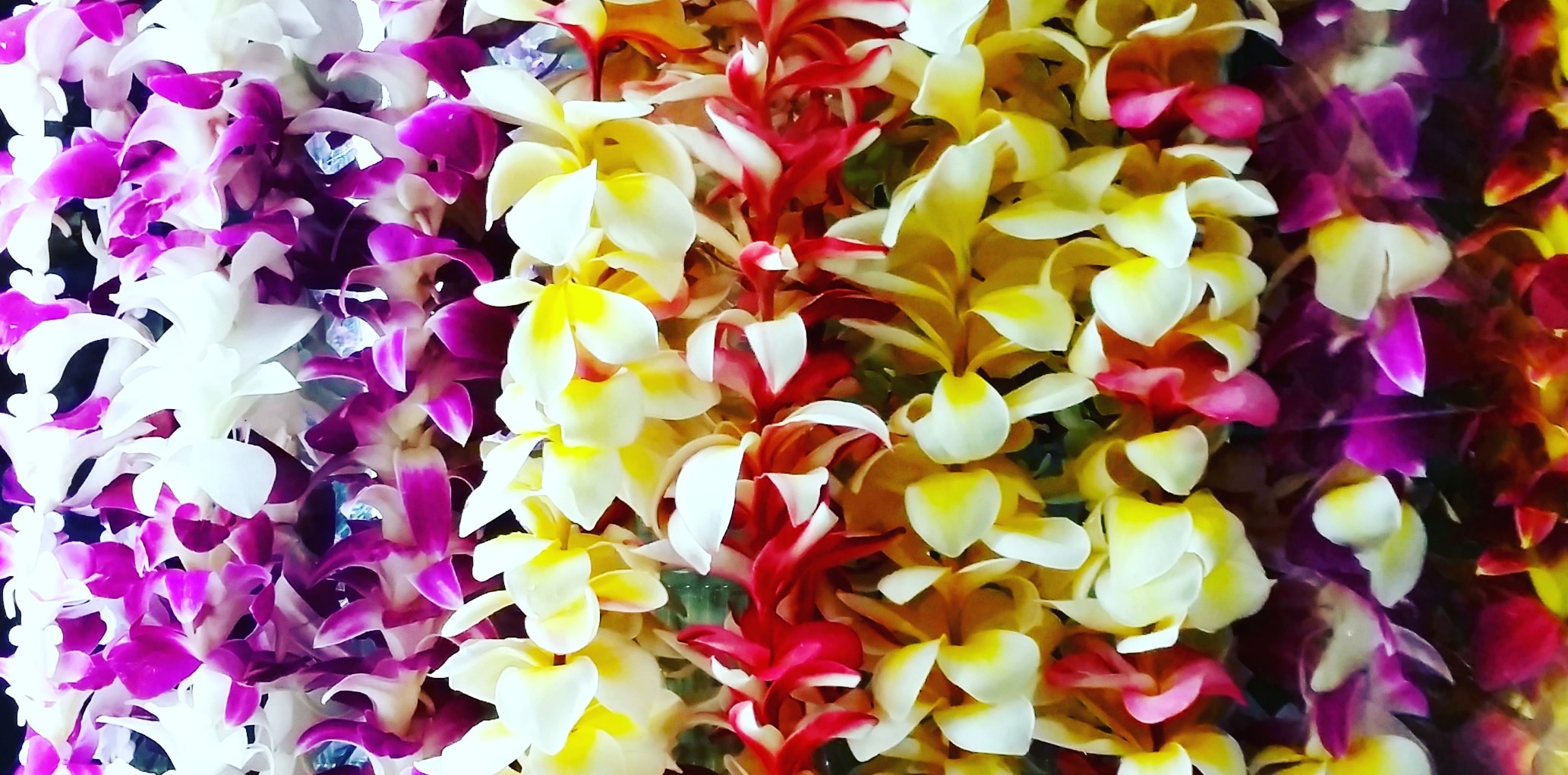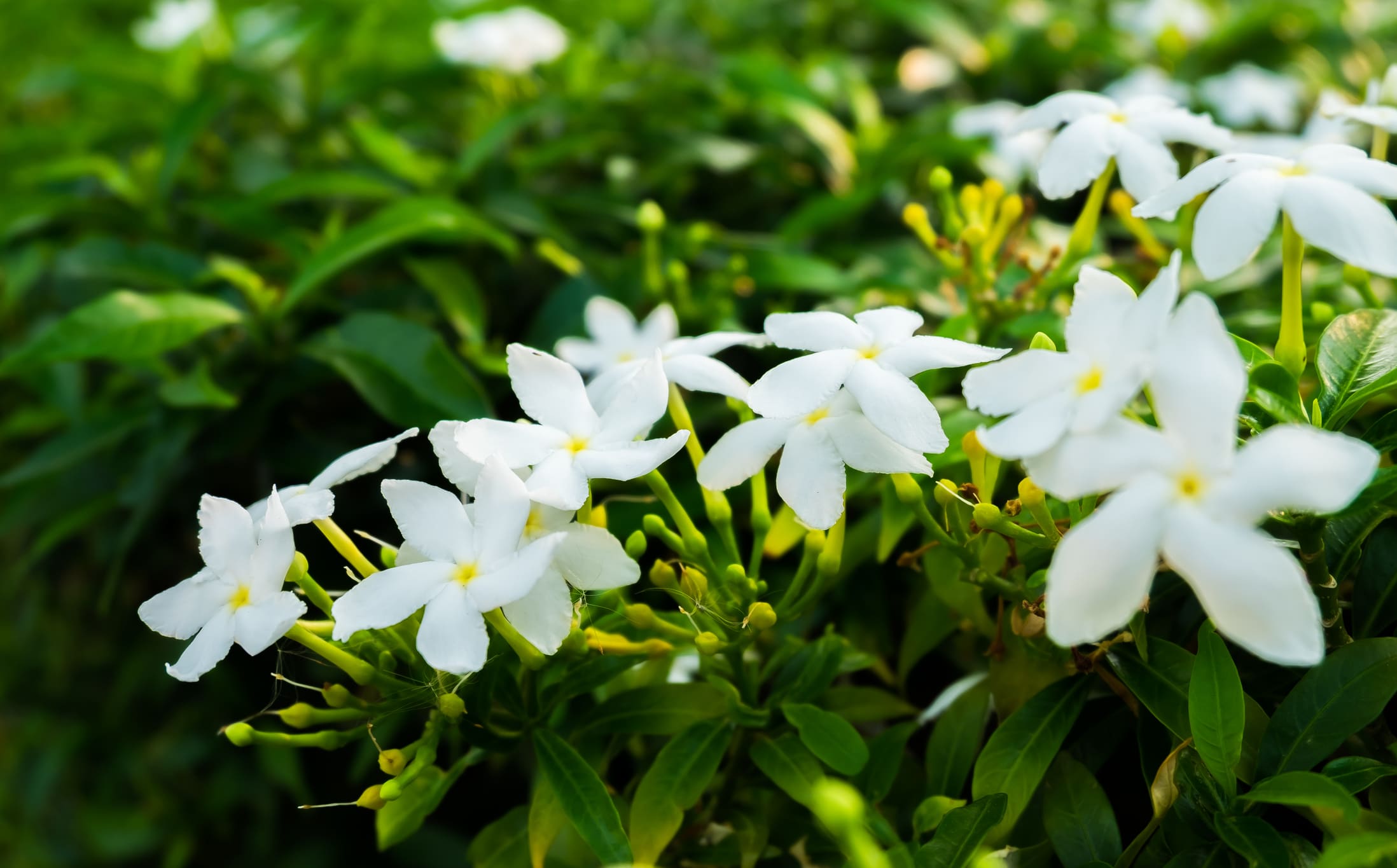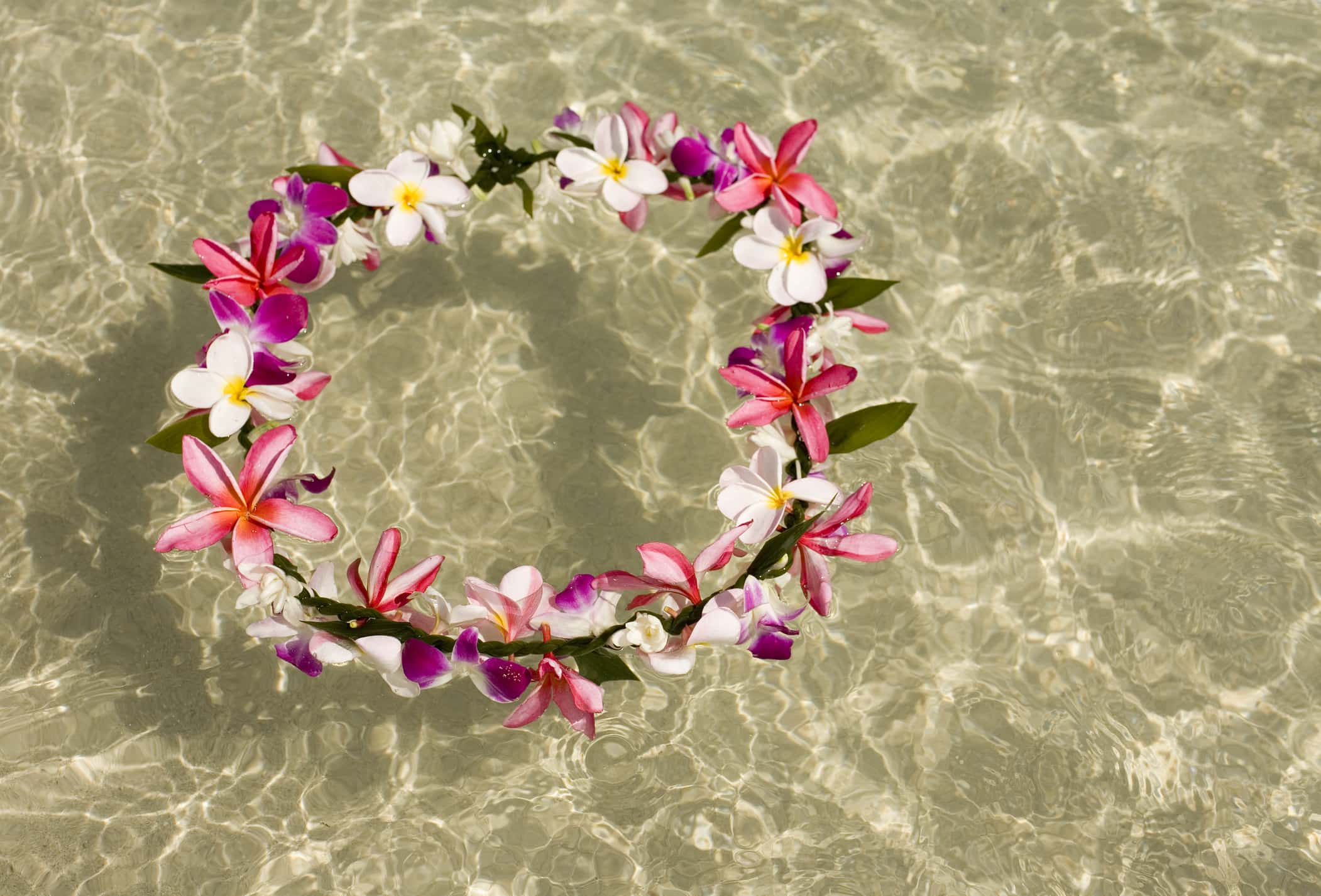Throughout the South Pacific, Polynesians honored their gods by twining greens into wreaths and adorning their bodies with strings of flowers and vines. The history of lei making in Hawai‘i begins with the arrival of the Polynesians voyagers, who took an incredible journey from Tahiti, navigating by the stars in sailing canoes. With these early settlers, the lei tradition in the Hawaiian Islands was born.
History of Nā Lei
Types of lei throughout Polynesia and Hawai‘i were very similar; Nā lei (plural for lei) were constructed of flowers, leaves, shells, seeds, nuts, feathers, and even bones and teeth of animals. In the Hawaiian tradition, nā lei were worn by ancient Hawaiians to beautify themselves and distinguish themselves from others.

Historians believe the maile lei was perhaps the most significant. Among other sacred uses, it was used to signify a peace agreement between opposing Aliʻi (Chiefs). In a Heiau (temple), the Aliʻi would symbolically intertwine the green maile vine, and its completion officially established peace between the groups.
With the advent of tourism in the islands, the lei quickly became the symbol of Hawaiʻi to millions of visitors worldwide. During the boat days of old Hawaii, lei vendors lined the pier at Aloha Tower to welcome malihini (visitors) to the islands and kamaʻaina (locals) back home. It is said that departing visitors would throw their lei into the sea as the ship passed Diamond Head in hope that, like the lei, they too will return to the islands someday soon.
Master lei maker Barbara Meheula said, “...every flower on the islands has a unique meaning, leis communicate emotion, appease superstitions and show relationships. They can even indicate social rank.”
A Custom of Aloha
There are very few “rules” when it comes to wearing a lei. Anyone can wear one, anytime – there never has to be a special occasion. It is perfectly acceptable to purchase one or to make one for oneself. It's very common to see locals have a kukui nut (candle nut), lei hulu (feather) or lei pūpū (shell) on hand to wear on special occasions. Hats are often adorned with flowers, ferns or feather leis as well.
There are however, a few “unspoken” rules one should know about receiving and giving a lei. A lei should be a welcomed celebration of one person's affection to another. Therefore, a lei should never be refused. The proper to way to wear is a lei is to gently drape over one's shoulders, hanging down in front and back.
The fragrant plumeria, or frangipani, is one of Hawaiʻi’s most abundant blossom. Nā lei of this fragrant, fragile flower are used to welcome guests but should never be given to sick people. Plumeria grows wild in cemeteries and is considered bad luck for people of ill health.

Lei giving is a regular part of any special occasion such as birthdays, funerals, weddings, anniversaries and graduations. Weddings often require specific nā lei, with each member of the wedding party wearing a different flower. The bride’s lei is usually made of pikake, the flower of romance, soft white and sweet smelling. Pikake was favored by Princess Kaʻiulani, who named the flower after the peacock, her favorite bird.
Pikake is often woven together with maile, a pungent smelling vine like plant that grows wild in Hawaiʻi’s rain forests. A groom's lei is made mostly of the maile, at times with some pikake as an embellishment.

Nā lei may be crafted of just about anything, but most often consists of fresh natural foliage such as flowers, leaves, vines and fern fronds. The most commonly used flowers are those of the plumeria, tuberose, carnations, orchids, pikake, maile, ferns and tī leaves.

Other types of lei may include, sea and land shells, nuts, feathers, animal teeth and bones, candy, money or anything that can be strung together in a series or pattern and worn as a lei poʻo (head lei), or around the neck.
Learn the Lei Lingo
- Haku – 3-ply braiding incorporating additional materials; a method of using a base material such as soften tree bark and braiding it while adding decorative foliage into each wrap of the braid
- Hili – to braid or plait with one material; most commonly made from three or more strands of supple vine or fern braided together
- Hilo – twist, intertwine; a method of making lei by twisting two strands together to form a rope
- Hipuʻu or Nipuʻu – a method of knotting the stems of decorative plant material, similar to a daisy chain
- Humu/ Humuhumu – sew to a backing, where each successive row of lei material is overlapped on to the previous creating a scale effect
- Kui – to pierce or string with a needle. A very common method used to string flowers such as plumeria, carnations, rose, etc.
- Wili – to wind, twist, crank or coil; a corkscrew type twist as found in a pig tail. This method of lei, is made by winding fiber around successive short lengths of material
- Haku mele – to braid a song; a song composed out of affection for an individual is considered a lei
Nā lei may be crafted open or closed, depending on the circumstances.

On May 1 of every year, Hawai'i celebrates “Lei Day,” first conceived in 1927 by poet Don Blanding. His co-worker Grace Tower Warren came up with the phrase “May Day is Lei Day in Hawai'i," and we here at Hawai'i Life Vacations hope that every day is a Lei Day for you!
Aloha e Komo Mai! Hawaiʻi Life - Vacations
